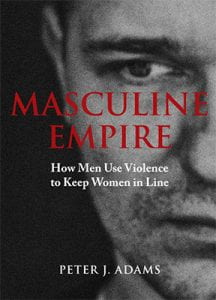My involvement with responses to violence against women began in the early 1980s. Since then I have participated in a range of community, research and teaching initiatives. Over this time, I can see some changes, particularly improvements in police responses, workplace equality and media discussion.
Nonetheless, what is disappointing and deeply troubling is the ongoing high rates of violence against women coupled with a form of masculinity that still positions men as superior.
The idea of men as superior keeps playing out in all sorts of contexts. Some standouts include, Donald Trump’s hyper-masculinity displays with Hillary Clinton and more recently with Joe Biden, intimate partner violence by stars in men’s team sports, depictions of men in liquor ads and social media threads such as bragging posts of date-rape by young West Auckland “Roast Busters”.
What I find most surprising is hearing men in their early adolescence parroting masculine stereotypes. How do they pick it up so young? What they describe is appalling, but what is more alarming is that they seem to see it as okay, which suggests their views might be more commonplace than we realise.
How is it possible for men to harbour such negative and disrespectful views of women? And how is it possible for them to think it’s acceptable enough to confidently brag about in the media and on the internet?
Their views are surely giving expression to a long tradition of men understanding themselves as naturally entitled to positions of power and to being in charge, particularly to being in charge in intimate relationships and in the home.
While most men choose not pursue violence against the women in their lives, what is clear, from newspaper articles and from many other sources, is that violence in the home is mostly perpetrated by men.
This is an unpalatable reality and facing it involves accepting an ugly and unpleasant aspect of who we are as men. But fronting up to this does not need to entail becoming anti-male. On the contrary, an investment in improving how we think and act as men could form the basis for a new and positive experience of being male.
Moreover, while women have an understandably strong interest in reducing violence, prevention in the long run is going to depend on the involvement of men.
We men have a very positive role to play in preventing further violence. We know where the supporting beliefs come from; we have more experience, understanding and access to the views that drive these disrespectful behaviours and we are in a position to influence each other and to make a difference.
At the heart of the struggle is the traditional ideal of what a strong man should look like. The ideal man is someone who is tough, able to handle strife, self-reliant and self-sufficient, someone who is loyal to his mates and able to keep his feelings in check. He is ‘the man alone’, ‘the southern man’, the ‘good keen man’; the man who is definitively male and the man with few traces of effeminate qualities such as tenderness or emotionality.
However, this singular notion of the ideal man is surely letting us down. Our boys grow up under its shadow and internalise it into how they understand relationships. It is little wonder that young men find themselves gravitating towards age-old practices of dominance and control.
Contrary to the traditional ideal, there is a multiplicity of different ways of understanding what it is to be a man. These vary according to context and beliefs: there are different ideals in Maori, Pacific, Chinese and Indian contexts. Men in different occupations are establishing new ideals. Circles of men with European cultural backgrounds are exploring more communicative ways of being men. Gay, bi-sexual and transgender men are also expanding understandings of masculinity.
A young man who is encouraged to explore different forms of masculinity is less likely to become lost to the traditional form with all its negative spin offs. Our boys and young men would benefit from exposure to these alternative and emerging forms of masculinity.
Men can play an active role in preventing violence against women. They can make a personal commitment to not engaging in violent or demeaning acts; they can challenge the negative beliefs and violent behaviour in other women, and they can contribute to addressing the root causes of violence.
I have written critically in the past about our Government’s failure to place gender at the centre of understanding violence in the home. But in the last couple of years there are signs this is changing. Recently the Ministry of Social Development released a plan for the next few years called Campaign for Action on Family Violence. It recognizes the central role of masculinity and it is well worth a read.
Also, have a look at my book: Masculine Empire: How Men use Violence to Keep Women in Line
Text by: Peter J. Adams Picture: Peter J. Adams


Recent Comments